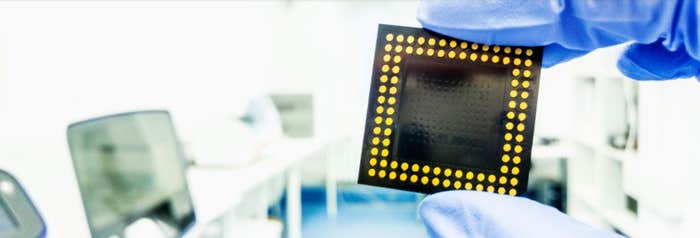When the Sloan Digital Sky Survey (SDSS) was conceived, there wasn’t anything like it. At the time, astronomical survey research was conducted by exposing and developing photographic plates—a slow and laborious process—and the data, owned by the scientists who gathered it, was difficult for others to access.
The Sloan Digital Sky Survey changed all of this, transforming how astronomical research gets done. Designed to create a map of the sky hundreds of times larger than any other map to date, it collected digital astronomical research data from a 2.5-meter telescope at Apache Point Observatory in New Mexico, making the data much easier to catalog, search, and use. The digitization multiplied the amount of data captured and shared with all scientists, thus facilitating new analysis. Today, SDSS, which has already produced a spectroscopic map of over a third of the night sky, is among the most highly-cited surveys in the history of astronomy, and its data platforms serve as models for other large-scale astronomical surveys. SDSS research has made headlines with precise measures of the expansion rate of the universe, studies of the habitability of planets, and newly-discovered modes of activity of the supermassive black holes at the centers of galaxies.
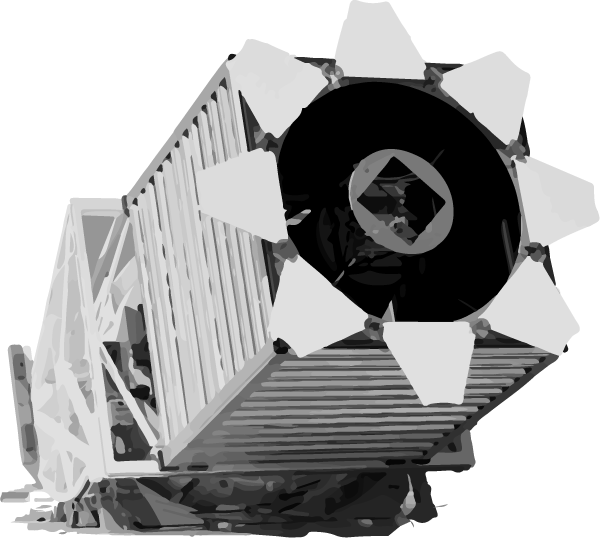
But it took a long time for all the pieces of the SDSS to come together—the instruments, the data collection, the procedures, and the funding. The Alfred P. Sloan Foundation, founded in 1934 by Alfred P. Sloan, Jr., the former head of General Motors, played an important role in supporting the project. It was an early supporter of the Sloan Digital Sky Survey in 1992 and has invested approximately $60 million across 16 grants, with another $16 million grant recently approved to continue SDSS through at least 2024. The project is considered one of the big success stories in science philanthropy, but the road to success was not without lessons about how to conduct big, collaborative, data-based scientific projects.
Deciding to fund SDSS
The Sloan Digital Sky Survey was initially conceptualized in the late 1980s by astrophysicist Jim Gunn. Jim had pioneered the use in astronomy of a new digital camera called a charge-coupled device, which records images by converting light into digital information. The new device could create the first digital, searchable, and computable map of the universe.
The Sloan Foundation was intrigued by the digital sky survey’s promise, which aimed to transform astronomy by moving to digital images and engendering a dramatic increase in information about stars and galaxies. Access to this data would facilitate the study of many new and important questions in astronomy that scientists were starting to explore.
“To understand questions such as what stars and galaxies are made of, how they are born and how they interact with one another, the nature of dark matter and dark energy, what the relationships between galaxies imply for the expansion of the universe, scientists need to be able to do statistical analysis on large data sets,” said Evan Michelson, the Sloan Foundation’s current program director overseeing SDSS grantmaking. “Without digitization, these questions would have been very challenging to pursue.”
In addition, the foundation was attracted by Jim’s proposed open data model that would, after an embargo year, provide collected data for free and hold them in an archive open to the world. The potential of such a model was apparent.
Access to this data
would facilitate the
study of many new and
important questions
in astronomy.
“The foundation wanted to nurture a culture of data-sharing in astronomy,” Evan said. “We wanted to try to move folks away from ‘I collected this; it’s my data; you can’t have it’ to a shared data model that could accelerate discovery.”
“We didn’t, and still don’t, have a broader astronomy portfolio, so this investment might have seemed a little surprising at the time,” said Evan. “But in fact, it was right in the foundation’s wheelhouse: it focused on basic science, it was about data access and facilitated the participation of many scientists for a relatively modest investment, and it was cutting-edge science. Here was an opportunity to transform astronomy. How could we say no?”
As with all its major grants, Sloan vetted the idea with outside expert advisors and presented the proposal to its board for approval. Jim and his team needed $25 million for the first phase of funding. With the board’s approval, the foundation contributed $8 million over three to four years for the survey’s first phase. Eight million, Evan said, was a figure decided upon by assessing what researchers needed, what the foundation could give, and what the scientists could secure in complementary contributions from other sources. “Determining how much money is needed at the outset is always a challenge,” said Evan. “Having our proposals externally reviewed by experts in the field helps us figure out what that percentage of project funding should be.” The SDSS grants are the largest and longest individual grants that the Sloan Foundation makes.
“Getting in early on the project meant our support would be meaningful, but the size of the project was also an important consideration,” said Evan. “If the project cost was an order of magnitude more, we may not have been able to participate.”
Early stumbling blocks
As with any novel scientific endeavor, it wasn’t easy in the beginning. Besides having to come up with new data platforms, the researchers hit problems right from the start. The camera sometimes wouldn’t function correctly. New technologies needed to be developed to finish the telescope. Costs were higher than expected. Progress was delayed.
“The question in these situations is always: How long do we stay with this? Supporting novel, large-scale science projects requires a degree of patience and willingness to take risks. Sometimes that patience can be difficult to maintain,” said Evan. Although the build-out of the telescope took longer than expected, the original SDSS team finally reached some success with the telescope recording starlight for the first time—astronomers call it achieving “first light”—in 1997. Though this took longer than planned, it was a sign of forward momentum, and the foundation decided to continue funding the project.
Engaging the scientific community
While the Sloan Foundation helped ensure that SDSS research plans were strong and that the collaboration was moving in the right direction, it took a mostly hands-off approach to the day-to-day operation of the project. The key to success, it believed, was to ensure the scientific community was at the helm and fully engaged.
![cmass[2]](https://assets.nautil.us/nautilus-vertical/alliance_67667088d2313f7743fffe137207e654.png)
Since its early development, SDSS has undergone four phases, each of which was about five years long and focused on a specific set of research questions. The scientific community itself identified the most important questions for each phase of the project. The first phase focused on mapping 10,000 square degrees of the sky, while future phases focused on more specific research questions. Phase II (2005–2008), for example, included an investigation of the stars in the Milky Way’s halo, and the study of the universe’s acceleration and dark energy. Phase III (2008–2014) mapped an even larger region of the universe, probed the role dark energy played in the early universe, hunted for planets, and built an infrared spectrograph able to study the Milky Way more completely than previously possible. Phase IV (2014–2020) is creating yet larger and deeper maps using quasars, is writing a development history of 10,000 nearby galaxies, and is expanding the study of the Milky Way to the southern hemisphere with a newly installed spectrograph. The next phase, Phase V (2020–2024), will take full advantage of this dual hemisphere presence and conduct observations at both sites across two different light wavelengths.
“Identifying the right scientific questions was critical to the program’s success,” said Evan. “The scientific community weighed in to select topics that offered the most exciting opportunities for discovery and these questions drove the type of data that was collected.”
A sustainable funding model
In addition to deciding on the topics worth studying, the SDSS team recruited subscribers to support the costs of the project. This innovative funding model for the program was proposed by Jerry Ostriker, one of SDSS’s early team leaders.
The Sloan Foundation has provided about 20 to 25 percent of the SDSS costs at each phase of its implementation—the rest has been funded mainly by university subscribers that join as members. Members get a say in project governance, can shape the survey design, and get privileged access to collected data prior to its release to the general public. Each university subscriber typically contributes $1 million over five years, which allows its astronomers, postdoctoral researchers, and graduate and undergraduate students to get a sneak peek at SDSS data. The SDSS team estimates that this translates to approximately $10,000 per participant per year. The project now has over 54 university partners who contribute most of the funding for SDSS.
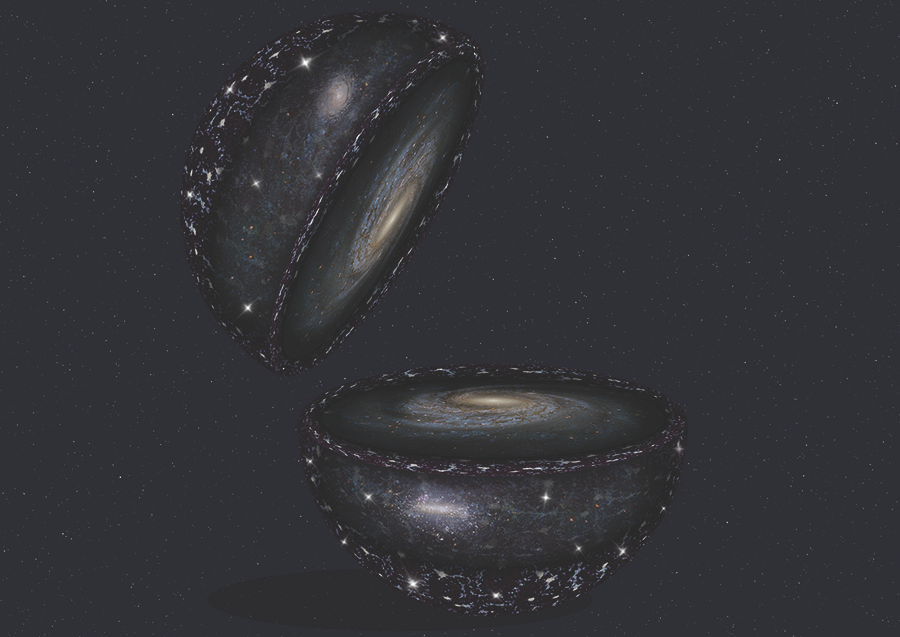
Today, the Astrophysical Research Consortium (ARC) has responsibility for overseeing all budgetary aspects of the project, and SDSS itself has a central collaboration team, a steering committee, a separate scientific team to lead each component of the survey, a data team, and an instrument development team, among others.
The Sloan Foundation asks questions upfront, holds annual check-ins with researchers, and assists the consortium when needed, but doesn’t have daily influence on the research. The foundation also ensures that a strong management plan is in place. For such a large, collaborative project, the Sloan Foundation must be sure that the project has strong leadership and management.
“A lot of it is getting the right people in place and allowing them the freedom and flexibility to build the infrastructure they need,” Evan said.
Emphasizing open data and diversity
There are two areas where Evan thinks the Sloan Foundation has been most influential in shaping the development of SDSS: open data and diversity. SDSS Phase IV director Michael Blanton agrees, noting that “the foundation converted these from ‘nice-to-haves’ to ‘got-to-haves.’ ”
The success of SDSS in accelerating scientific discovery across the astronomy community has been based in its open data principles, which have allowed for open-ended discovery and examination of questions in astronomy that were not envisioned at the outset of SDSS. After a one-year period during which the data is made available to participating members, all the data is then made public. Anyone, from professional astronomers to museum staff to high school students, can use the data without restrictions.
![fos_dr6[2]](https://assets.nautil.us/nautilus-vertical/alliance_2277174304abbf7f8fb20e05a25e0a15.jpg)
SDSS also developed a data citation policy which standardized references to data collected by the collaboration and makes experts available to answer questions and troubleshoot problems once data sets are shared. In addition, its two-decade history of data collection allows researchers to track changes in celestial objects over time. These practices worked. Studies show that SDSS is among the most highly-used and cited data sets in astronomy. SDSS data has been used in over 7,800 papers and 390,000 citations, 80 percent of which have been published by scientists with no formal relationship with the SDSS.
Challenges remain. With the open data model, the SDSS team must continually work to keep track of who is using the data. The collaboration has no direct control over how the publicly-released data is used. There is always a need to update data practices and infrastructure, which takes time and financial resources.
The success of SDSS in accelerating scientific discovery has been based in its open data principles.
The Sloan Foundation has also required the integration of diversity and inclusion considerations throughout the collaboration, ranging from how senior management teams are constructed to ensuring participation of underrepresented minorities. The foundation provided funding for a Faculty and Student Team mentoring program that helps underrepresented minority students and faculty from non-member institutions become full members of SDSS. “As a condition of our grantmaking, we require that SDSS leadership pay close attention to engaging women and underrepresented minorities,” said Evan. “While there are always strides to be taken in this area, I am proud that promoting diversity and inclusion have become core values of SDSS.”
The recently named director of SDSS V, Juna Kollmeier, echoed this point. “The Sloan Foundation is helping to make fundamental changes regarding diversity that have stymied other funding institutions for decades,” she said.
Naming considerations
As a result of the foundation’s generous grants and early support of the project, consortium leaders named the survey and telescope after the Sloan Foundation early in its history. Evan noted that naming a project after the foundation has its advantages and disadvantages: While it can give the foundation recognition for its support, it can also hinder fundraising with other sources.
“If you are going to put your foundation’s name on it, you should be prepared to support the project for the long haul, or else be open to project renaming when you depart,” cautioned Evan. In the case of SDSS, the project was successful in getting funding from the Sloan Foundation for additional phases, as well as from university subscribers and government agencies, such as the National Science Foundation. While it has proven more difficult to secure additional philanthropic support for SDSS given the Sloan name, the collaboration is working to make progress.
Evaluating progress
The SDSS proposal goes through the same rigorous, external peer-review process that the Sloan Foundation has established for all proposals.
“The phased nature of the SDSS program and our grant renewal process forces the SDSS team to justify the plans for each subsequent phase every few years,” said Evan. To report on its progress, each year the SDSS consortium sends the Sloan Foundation a summary of its progress. Each grant comes with a set of metrics—some are about management and budget goals and others are about specific hardware installation milestones. The primary metrics relate to achieving scientific research objectives, such as observing a certain number of stars or galaxies. The Sloan Foundation reviews progress each year and toward the end of each SDSS phase, determines whether to consider funding for the next phase.
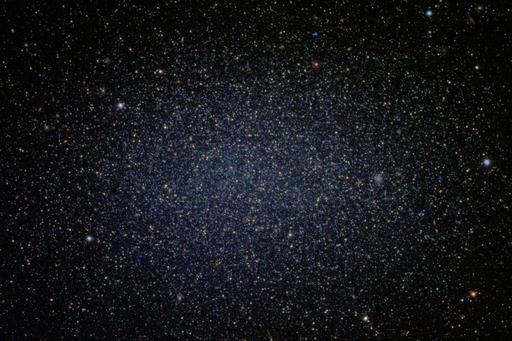
In determining funding for future phases, the Sloan Foundation asks whether the telescope instrumentation and collaboration would still be relevant for the period of the project as the landscape of astronomical research changes and evolves, whether the methods and research questions proposed by the SDSS team are likely to remain at the forefront of science in this area during this period, whether the management team and plan remain strong, whether plans for data access, storage, archiving, and dissemination continue to be on the leading edge, whether SDSS has made substantial strides in terms of diversity, and whether there is demand for this project from the astronomical research community.
“Our responsibility is to ensure the SDSS team is asking the right questions, that oversight and management are sound, and that they address any operational issues,” Evan said.
To plan for the next phase, Evan works closely with the SDSS team as they write up a proposal, which is first reviewed internally by foundation staff and then by external subject matter experts in astronomy and cosmology. Principal investigators respond to reviews and make clarifications and adjustments, after which Evan presents the review and response document internally a second time before deciding whether the Sloan Foundation board of trustees should consider it for final approval.
“We just completed this process in approving their proposal for a $16 million grant that will allow the fifth phase of SDSS to go forward, with observations starting in 2020,” said Evan. Although more than three years out, the foundation needed to consider the proposal earlier because of the infrastructure upgrades and hardware build-out that would be needed.
Before even submitting a proposal for SDSS V, the collaboration spent nearly a year planning its future scientific program, presenting its initial ideas to the foundation’s staff before a formal proposal was invited. The proposal preparation and review process to consider support for SDSS V then took another six months. “The original proposal was nearly 200 pages long. We got 12 external reviews, which provided them with over 50 pages of comments. The SDSS team’s response to reviews exceeded 25 pages. It was a lot of material, but we had to do our due diligence,” said Evan. “Without a doubt, they did an excellent job navigating the process, which resulted in a top-notch plan for SDSS V.”
“In the end, it was worth it,” he said. “When our board approved the proposal in October, I could not have been happier to make that phone call to let them know the grant was approved.”
Evolving with the times
One of the notable things about SDSS is how successful it has been over a long period—25 years. The process of periodic grant reviews and renewals helped ensure that the project evolved. The subscription model helped ensure that SDSS was responding to the changing demands in the field—including to topics for research, as well as to changes in technology.
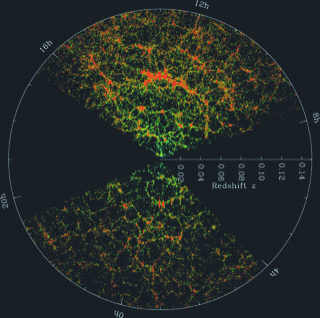
For instance, as it became clear that the digital imaging technology used in Phases I and II was soon to be surpassed by other facilities, SDSS switched its focus exclusively to wide-field spectroscopy, which allowed SDSS to remain the forefront facility in astronomy. In addition to spectroscopy conducted on visible light, SDSS has been a pioneer of infrared spectroscopy (studying infrared light from distant objects), ensuring its relevance to astronomical research for years to come.
Other developments expanded the project over successive phases. The first telescope at Apache Point Observatory in New Mexico could only cover the northern half of the sky. In the fourth and most recent phase of SDSS, Sloan Foundation funding helped the consortium expand to a second telescope in Chile to capture astronomical data from the southern half of the sky. SDSS V will expand this partnership with the Chilean telescope, as it will be fully dedicated to SDSS observations. This collaboration across multiple telescopes located in different sites is rather rare in astronomy.
Keys to success
In retrospect, SDSS is an accomplishment that revolutionized astronomy and far exceeded expectations. It is one of the most productive astronomical facilities in history, a relatively modest investment that has brought a greater understanding of our universe.
“One of the important reasons for its success,” said Evan, “is that it focused on the important questions in astronomy and astrophysics, and on using big data to answer them more accurately, more quickly, more efficiently, and more transparently.”
SDSS also advances a model of international scientific collaboration that improves how institutions work together, how data is shared, and even how the public can engage in scientific discovery. Its open data policies and the multi-institution subscription model helped ensure the engagement of the scientific community in the project.
The fact that the project was and is completely driven by “passionate researchers who were and are willing to lead this and put in their blood, sweat, and tears is the key ingredient that helps SDSS thrive,” Evan said. “It was important that the project was not foundation-driven, but community-driven.”
Ultimately, many factors contributed to the success of the project.
“You need a combination of dedicated people asking important scientific questions, the right technology, an effective management structure, data policies to facilitate broader use, and an innovative and collaborative funding model,” Evan said. “There’s no magic formula, but for SDSS, the right leadership that was committed to science and open collaboration made it work.”
























